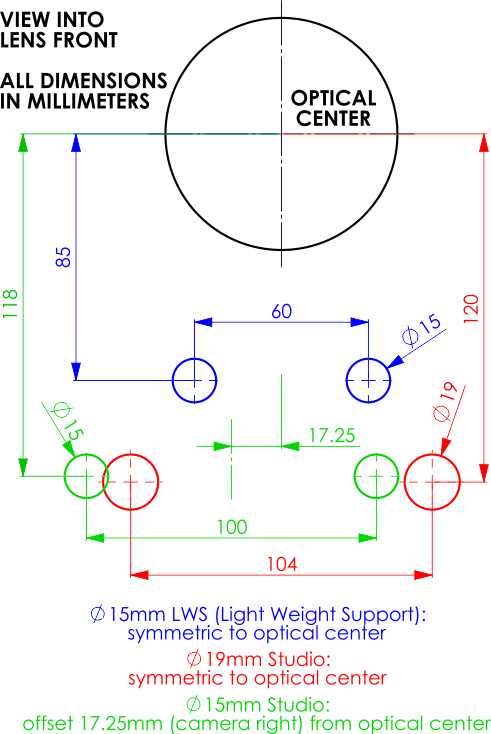By Eric Johnston, Product Specialist
There are three commonly used rod standards for professional motion picture camera equipment. While these have been around for years; the difference between them often causes confusion. The purpose of having the rods is to support accessories from the camera baseplate such as a mattebox, follow focus, handgrips, lens support, etc. I would like to take this opportunity to explain the differences between each standard below.
15mm Light Weight Support (15mm LWS):
These are 15mm diameter rods symmetrical to the optical center of the lens spaced 60mm apart (when measured from center to center) and 85mm in height from optical center.
This spacing is often referred to “15mm video” or “15mm LWS” and is the standard most common for ENG and broadcast work. It is also preferable for lighter weight handheld camera configurations such as the DSLR cameras which have gained popularity in recent years. It is most commonly confused with the 15mm Studio standard.
15mm Studio Support
These are 15mm diameter rods offset 17.25mm to the camera right from optical center of the lens spaced 100mm apart (when measured from center to center) and 118mm in height from optical center.
This standard was introduced before the 19mm Studio standard and may have been offset to balance the accessory load placed on film cameras. The problem with this is that as the rods extend farther out from the camera, they begin to flex more than the thicker 19mm rods so custom solutions needed to be invented to keep up with the ever-increasing size of equipment, most notably lenses.
The market in the USA where this is the dominant standard is Los Angeles and it often causes confusion for those who source their equipment from there.
19mm Studio Support
These are 19mm diameter rods symmetrical to the optical center of the lens spaced 104mm apart (when measured from center to center) and 120mm in height from optical center.
This offers two advantages over the older 15mm Studio standard. First, it is symmetrical and therefore creates a more balanced camera configuration. Secondly, due to the use of thicker rods, the problem with flex as you move farther out from the front of the camera baseplate, is greatly reduced.
Please see the below chart for a visual representation of how all three relate to one another.
Download: Rod Standard graph [PDF 27.2 KB]
